Engineering Mechanics: Unit IV: Friction
Wedge Friction
with Solved Example Problems
Wedges are used to either raise large loads or to keep large loads in place by inserting a wedge below the loads.
Wedge Friction • Wedges are used to either raise large loads or to keep large loads in place by inserting a wedge below the loads. • Problems involving wedges can be solved by drawing F.B.D. of ach object and using conditions of equilibrium. • The direction of impending motion is important in such problems which decides the direction of frictional force... Note: • To raise the block A shown in Fig. 8.10.1, the direction of impending motion for A will be upward and for B it will be towards right. • To support the block A, the impending motion will be downward for A and towards left for B. Example 8.10.1 A block 'A' weighing 80 kN is to be moved towards left by light wedge B. Find necessary force 'P', if angle of friction at all rubbing surfaces is 15°. Refer Fig. 8.10.2 Solution: Example 8.10.2 Determine the minimum force 'P' required to overcome static friction and begin to lift 100 N block 'A' shown in Fig. 8.10.3. The weight of 20° wedge 'B' is 5 N and the coefficient of static friction between all surfaces is 0.4. Solution: The two free body diagrams are shown in Fig. 8.10.3 (a). Example 8.10.3 A block of 1000 N is to be raised up by means of force P each acting on wedges as shown in Fig. 8.10.4. If angle of friction at all rubbing surfaces is 15°, determine P. Ignore weight of wedge. Solution : Example 8.10.4 Find the minimum horizontal force 'P' to be applied to block 'A' weighing 500 N so as to keep block 'B' of 1500 N in limiting condition of equilibrium. Refer Fig. 8.10.5. Solution: For minimum force P, block B has tendency to move downward and A has tendency to move towards left. The F.B.D. of blocks A and B are shown in Fig. 8.10.5 (a). Example 8.10.5 Block A supports a pipe column and rests, as shown in Fig. 8.10.6, on wedge B. μs = 0.25 at all surfaces of contact. Determine: a) The angle 0 for which sliding is impending, and b) The corresponding force exerted on the block by the vertical wall. Solution: The impending motion of A is downwards while that of B is towards right. The free body diagrams are shown in Fig. 8.10.6 (a).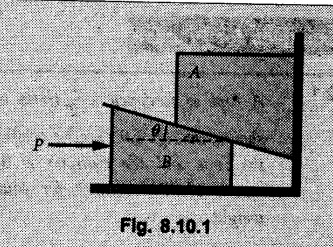
Solved Examples for Understanding
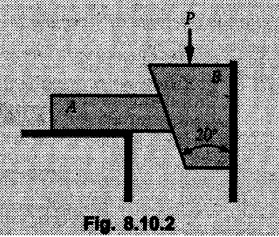

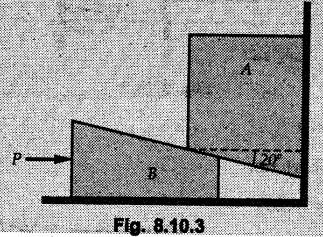

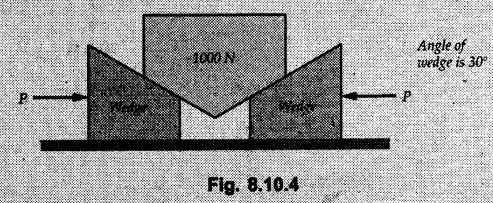
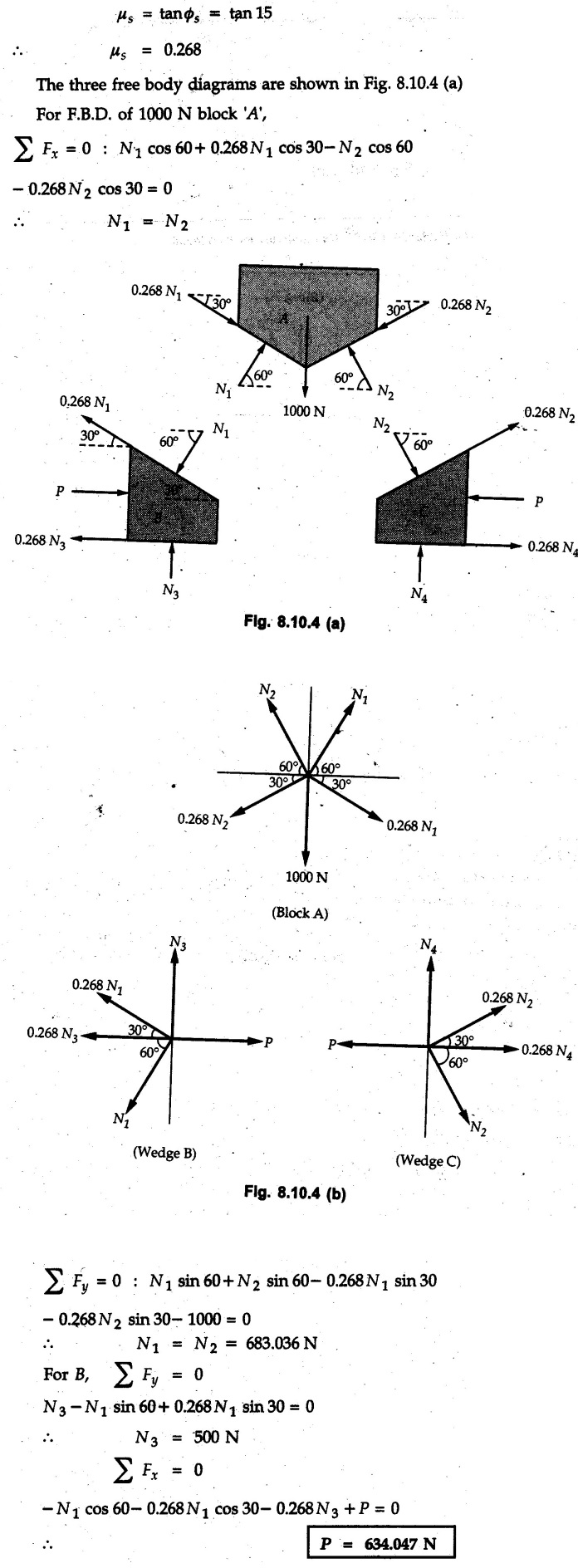
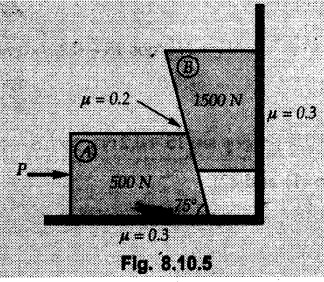

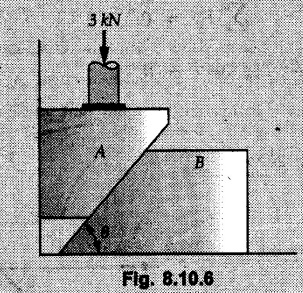

Engineering Mechanics: Unit IV: Friction : Tag: : with Solved Example Problems - Wedge Friction
Related Topics
Related Subjects
Engineering Mechanics
ME3351 3rd semester civil, Mechanical Dept | 2021 Regulation | 3rd Semester Mechanical Dept 2021 Regulation
